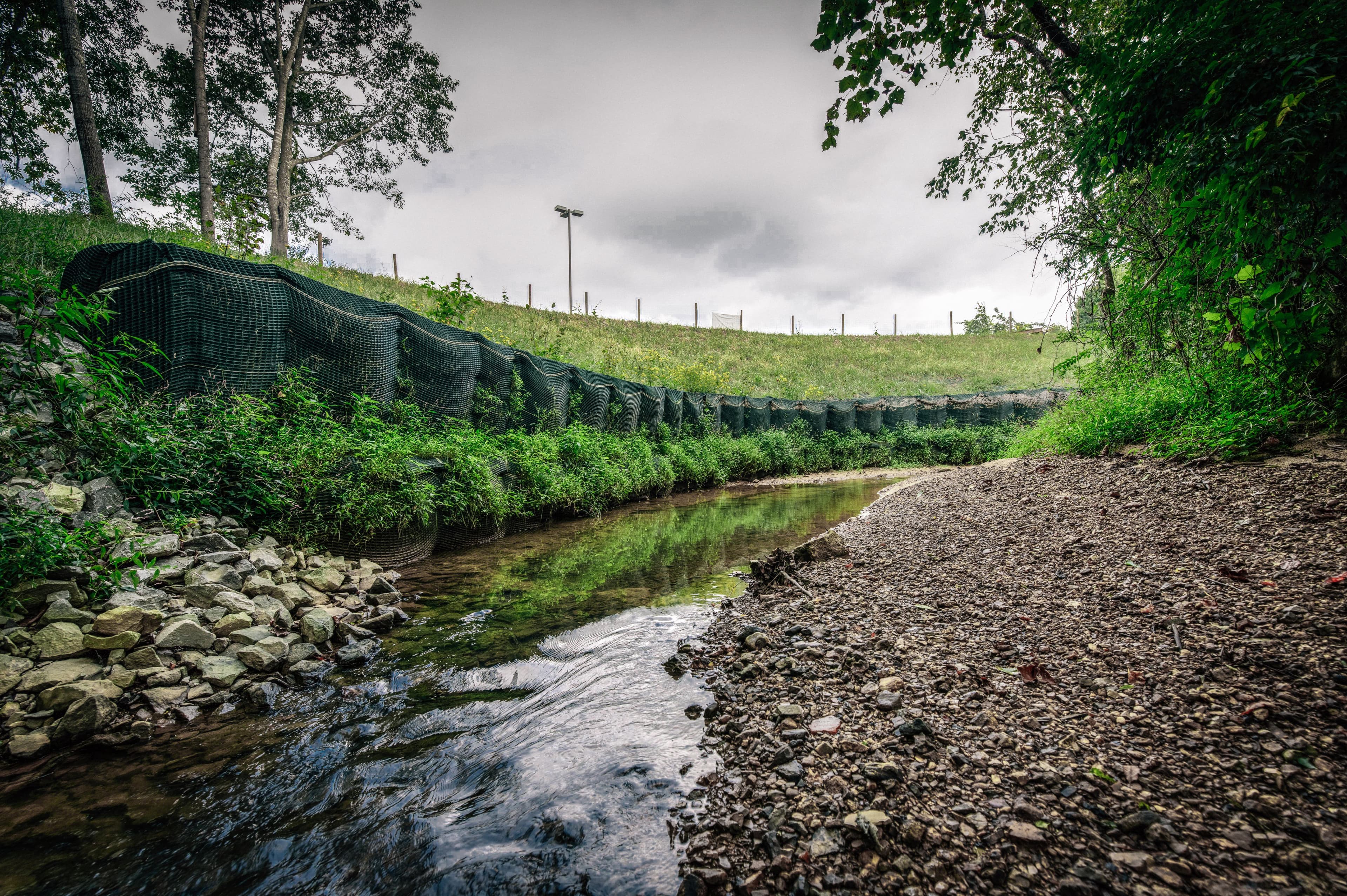
What are the key considerations in designing reinforced soil slopes?
Reinforced soil slopes (RSS) stand as a cornerstone in modern geotechnical engineering, offering robust solutions for constructing slopes with inclinations less than 70 degrees from the horizontal. These structures are pivotal in combating erosion, facilitating vegetation growth, and ensuring the stability of steepened terrain. The general facing systems deployed in these constructions can be broadly classified into two types: soft or vegetated and hard armored systems, which may or may not include a geosynthetic face wrap. This comprehensive guide delves into the selection of geosynthetic facing options for reinforced slopes, underlining their importance and utility in various geotechnical applications.
Design principles of reinforced soil slopes
The design of reinforced soil slopes hinges on two critical components: the facing system and the reinforcement strategy. The facing system is integral to erosion protection and structural support, enabling the formation of slopes that surpass natural stable inclinations without compromising stability. Secondary reinforcement, typically comprising geosynthetic materials, aids in compaction and mitigates surficial sloughing at the slope face.
Erosion poses a significant threat to slope stability, driven by factors such as rainwater impact and surface runoff. The risks escalate under conditions of water currents and wave attack. Slope face erosion can create rills and gullies, leading to surface sloughing and deep-seated failure surfaces. To address these challenges, reinforced slope designs should incorporate comprehensive erosion control measures and re-vegetation strategies, underscoring the necessity of integrating environmental considerations into engineering solutions.
Role of geosynthetics in RSS
Geosynthetic materials, including geotextiles and geogrids, play a versatile role in RSS, enhancing structural support, facilitating drainage, and supporting vegetation growth. These synthetic solutions bridge the gap between soft and hard facing options for reinforced slopes, offering tailored reinforcement that meets specific site requirements. They are particularly valuable in environments subjected to dynamic weather conditions and hydraulic pressures, where traditional materials might fail to provide adequate stability and longevity.
Hard armor erosion protection for severe conditions
In situations where reinforced slopes are subjected to severe erosive forces associated with water currents and wave attack, the erosion protection system must be specifically designed to resist these forces. Typically, such severe cases will require a ‘hard’ armor erosion protection system such as riprap, gabions, articulating concrete blocks, or fabric-formed concrete. While these systems do not incorporate a geosynthetic face wrap, a geotextile filter is typically installed beneath the erosion protection system along the slope face to enhance stability and filtration.
Facing support for steeper slopes
Reinforced slopes that are 1(H): 1(V) and steeper typically require additional facing support during construction. A geosynthetic face wrap and/or a hard armor facing support system is often employed in these scenarios. Particularly when constructing slopes with materials like silts and poorly graded sands and gravels, or in environments subjected to external erosive forces such as mild water currents and/or wave attack, robust facing supports are essential. Temporary supports such as wooden forms or left-in-place welded wire mesh (WWM) forms are typically employed to ensure structural integrity during construction. The vertical spacing of reinforcements and the choice of materials must be carefully planned to maintain stability and durability.
UV stability and longevity
When employing geosynthetic materials, ensuring UV stability is crucial for long-term effectiveness, especially in environments with significant exposure to sunlight. Structures with a design life greater than three years, as recommended by FHWA guidelines, should use UV-stable materials to prevent degradation over time. In vegetated structures, where vegetation might provide some protection from UV light, the use of UV-stable facing is still recommended to safeguard against areas where vegetation coverage is sparse.
Conclusion
Reinforced soil slopes represent a fusion of engineering excellence and environmental consciousness, addressing both structural and ecological challenges in slope management. Through strategic design, the selection of appropriate facing options, and the integration of advanced materials, RSS provide effective solutions for maintaining slope stability and controlling erosion. As engineering practices evolve, the ongoing innovation in materials and design approaches will continue to enhance the performance and sustainability of reinforced soil slopes, ensuring their vital role in geotechnical engineering.